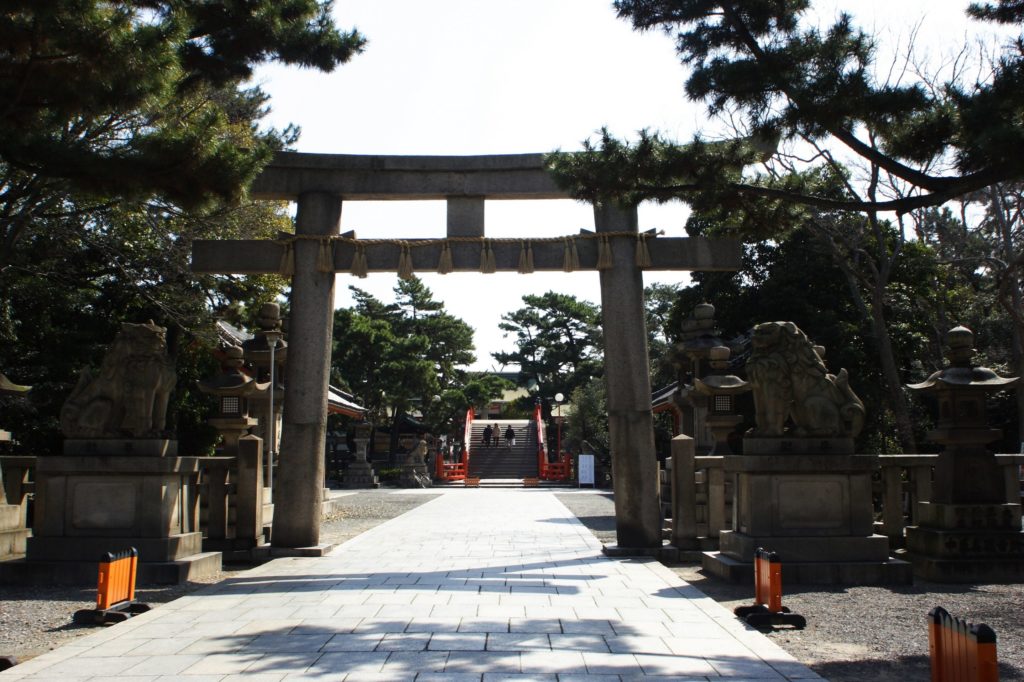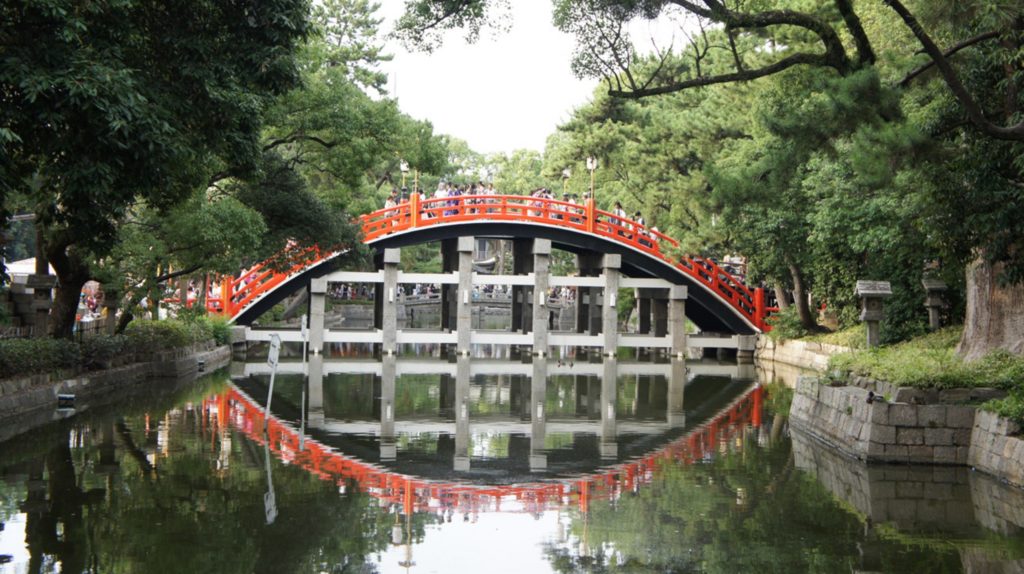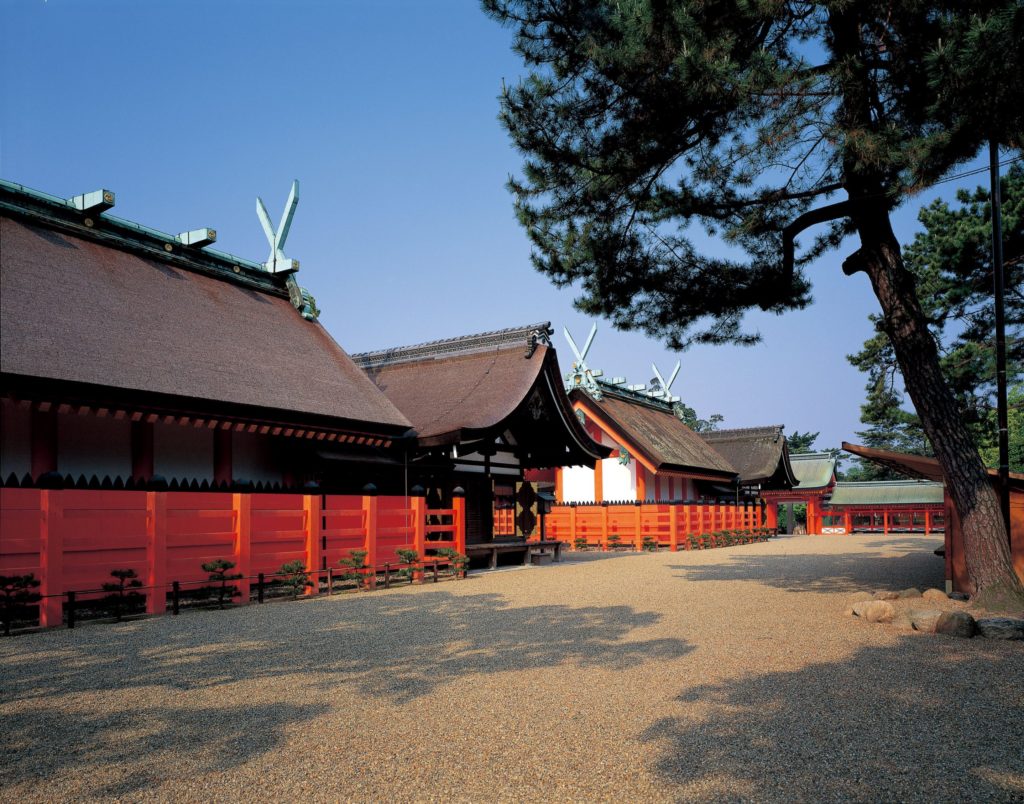Sightseeing Spots
- Nagato
Setsu Province Ichinomiya Sumiyoshi Taisha Grand Shrine
Start by crossing the arched bridge with its 48 steps to the shrine's four main halls (National Treasures)! A visit to Osaka's Sumiyosi Taisha Grand Shrine will surely bring a wealth of blessings
Enshrined here are the three Sumiyoshi deities, Sokotsu-no-o-no-Mikoto (of the highest ranking shrines), Nakatsutsu-no-o-no-Mikoto (of second ranking shrines), and Uwatsutsu-no-o-no-Mikoto (of third rank shrines), who were brought forth from the sea by a purification ritual performed by the god Izanami-no-Mikoto. Also enshrined here is the Empress Jingu, who was enshrined at Sumiyoshi Taisha Grand Shrine following her safe return after subduing the Kingdom of Silla (in modern-day Korea), by order of the deity Sumiyoshi Daijin via an oracle.
The powers of the deities enshrined here are six. First, because the three Sumiyoshi deities appeared when the god Izanagi-no-Mikoto performed a purification ritual, they are revered as purifying deities. Nowadays, the summer Sumiyoshi Festival brings people from across the country hoping to be purified.
Next, because the three Sumiyoshi deities appeared from the ocean, they are also worshipped as gods of safety on the high seas. The 600-odd stone lanterns within the shrine grounds are largely dedicatory offerings from people with ties to the ocean shipping industry.
These deities are also revered as gods of industry and agriculture, and there is even a legend from long ago, telling that it was they who taught people how to grow rice paddies free from grasses.
Every June 14th, a ritual rice planting is held, planting rice in the paddies within the shrine grounds (about 4,000 square meters). In fact, this ritual rice planting has deep connections to Yamaguchi Prefecture. The ritual is said to have begun when Empress Jingu wished for a great harvest, and summoned rice-planting maidens from Yamaguchi to perform the rice-planting within the rice paddies.
It is also said that at the time that Sumiyoshi Daijin was enshrined here, the Empress Jingu had a guard of 16th archers. Because of this, there is a deep belief in the god as a god of archery, and in the spring there is an annual archery ritual (the first shot of the year) held to ward off evil and bring peace.
The deity is also worshipped as a god of waka poetry and sumo.
The 99,000 square meter shrine grounds include the four-peaked Main Hall (a National Treasure) and a total of 27 auxiliary shrines (shrines with a strong connection to the origins of the Sumiyoshi deities) and subordinate shrines (shrines related to Sumiyoshi, or those that were invited into the shrine grounds), as well as the curved Soribashi bridge, the symbol of the shrine; wish-granting rocks placed in five sacred spaces; the "Omokaru Stone," which can divine whether your wish will be granted or not; the "Tom Thumb's Bowl" (from a Japanese fairytale) photo spot, and much more. We especially recommend the sacred Soribashi bridge, which extends over the sacred pond at the front of the shrine, with its peak incline of about 48 degrees. Cross over this bridge to reach the Main Hall.
There are festivals held at Sumiyoshi Taisha Grand Shrine throughout the year. The Sumiyoshi Festival is held for three days beginning on July 30th, an incredible event with a 2-ton portable shrine. If you're thinking of visiting Sumiyoshi Taisha Grand Shrine, consider taking a look at its schedule of events throughout the year before you head out.
| Access from Otani Sanso | About 410 min by car |
|---|---|
| Recommended by locals | Special Festivals at Sumiyoshi Taisha Grand Shrine Otaue Rice-Planting Ritual The Empress Jingu wished for a great harvest, and summoned rice-planting maidens from Nagato Province (present-day Yamaguchi Prefecture) to plant rice within the shrine grounds, beginning this ritual practice. Sumiyoshi Festival A grand festival held in and around Sumiyoshi Taisha Grand Shrine. The portable shrine that highlights the final day of the festival weighs about two tons. The sight of this impressive shrine crossing over the Soribashi arched bridge is incredible, indeed. During the course of three hot days, all of Osaka will be purified. Moon-Viewing Festival |
| Address | 2-9-89 Sumiyoshi, Sumiyoshi-ku, Osaka City, Osaka Prefecture 558-0045 |
| Parking | Available for free |
| Business/Opening Hours | Opening and closing times of the shrine gates Gate opening times: - 6:00 a.m. (April - September) - 6:30 a.m. (October - March) *Opens at 6:00 a.m. on the first day of every month and on the "First Dragon Day" Gate closing times/Exterior gate closing times: 4:00 p.m. - Area within fence: 5:00 p.m. (All year) |
| Holidays/Closed Days | Open all year |
| Notes | *Cautions regarding New Years and Sumiyoshi Festival (a summer festival) |
| Website | Sumiyoshi Taisha Grand Shrine別ウィンドウ |
Yamaguchi Sightseeing Information
See Otani Sanso JournalTransportation
See more

